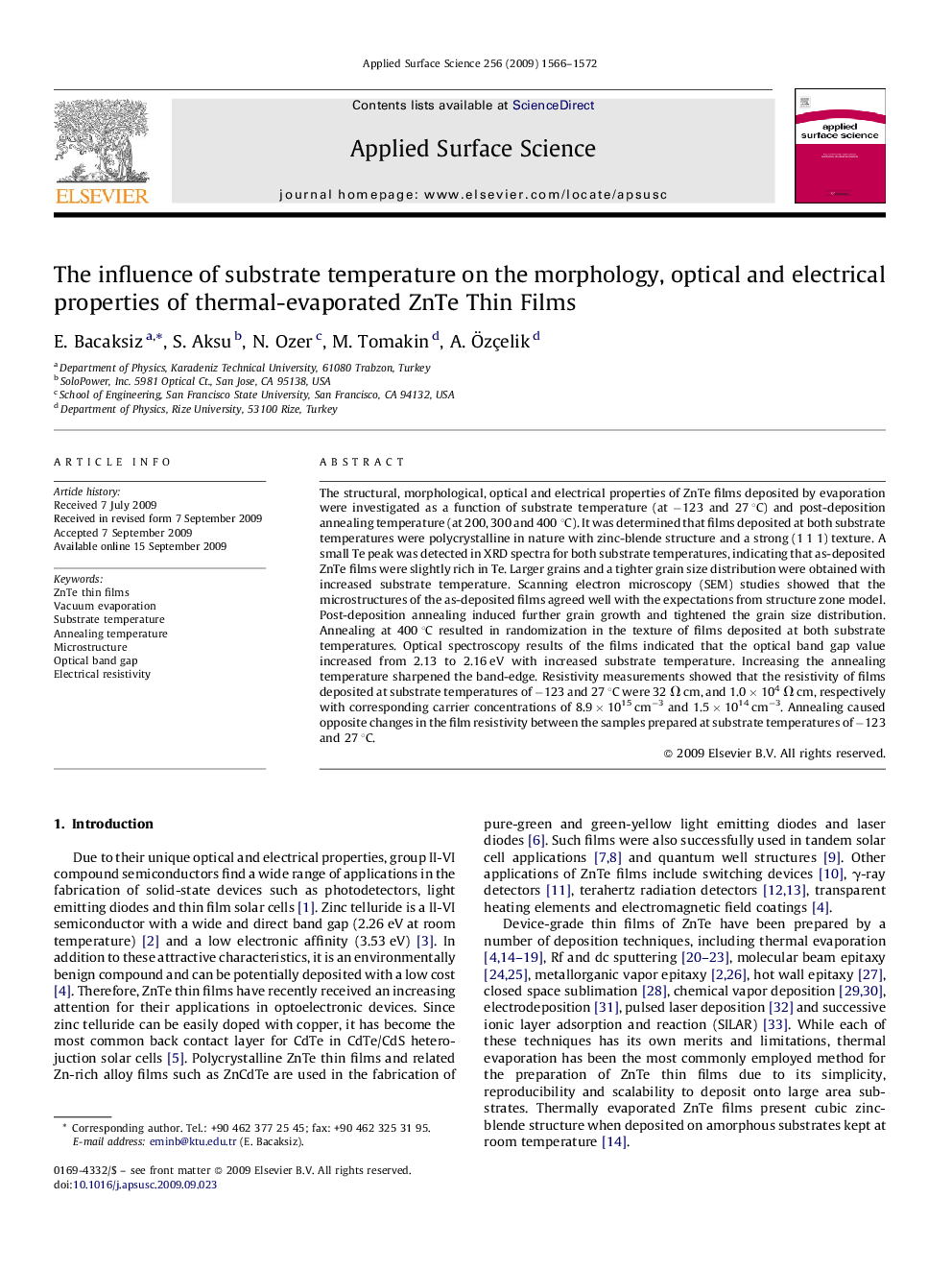| Article ID | Journal | Published Year | Pages | File Type |
|---|---|---|---|---|
| 5360874 | Applied Surface Science | 2009 | 7 Pages |
Abstract
The structural, morphological, optical and electrical properties of ZnTe films deposited by evaporation were investigated as a function of substrate temperature (at â123 and 27 °C) and post-deposition annealing temperature (at 200, 300 and 400 °C). It was determined that films deposited at both substrate temperatures were polycrystalline in nature with zinc-blende structure and a strong (1 1 1) texture. A small Te peak was detected in XRD spectra for both substrate temperatures, indicating that as-deposited ZnTe films were slightly rich in Te. Larger grains and a tighter grain size distribution were obtained with increased substrate temperature. Scanning electron microscopy (SEM) studies showed that the microstructures of the as-deposited films agreed well with the expectations from structure zone model. Post-deposition annealing induced further grain growth and tightened the grain size distribution. Annealing at 400 °C resulted in randomization in the texture of films deposited at both substrate temperatures. Optical spectroscopy results of the films indicated that the optical band gap value increased from 2.13 to 2.16 eV with increased substrate temperature. Increasing the annealing temperature sharpened the band-edge. Resistivity measurements showed that the resistivity of films deposited at substrate temperatures of â123 and 27 °C were 32 Ω cm, and 1.0 Ã 104 Ω cm, respectively with corresponding carrier concentrations of 8.9 Ã 1015 cmâ3 and 1.5 Ã 1014 cmâ3. Annealing caused opposite changes in the film resistivity between the samples prepared at substrate temperatures of â123 and 27 °C.
Keywords
Related Topics
Physical Sciences and Engineering
Chemistry
Physical and Theoretical Chemistry
Authors
E. Bacaksiz, S. Aksu, N. Ozer, M. Tomakin, A. Ãzçelik,
